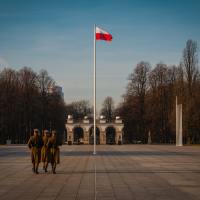
This article is brought to you thanks to the collaboration of The European Sting with the World Economic Forum.
Author: Stephen Hall, Writer, Formative Content
- Times Higher Education has released its list of the world’s top universities for 2023.
- Brazil is the most represented university on the list.
- Universities in Chile and Colombia also ranked highly.
Latin America represents 8.5% of the world population and produces 8.7% of the planet’s GDP, according to University World News. But the region’s education system has some significant challenges compounded by the impacts of COVID-19.
“Latin America and the Caribbean faces an unprecedented education crisis, which could compromise our countries’ future development,” said Carlos Felipe Jaramillo, World Bank Vice President for Latin America and the Caribbean.
However, higher education access has generally been improving, if not equally in every region, says the World Bank. The Latin America and Caribbean (LAC) region had the second highest enrolment rates in the world between 2000 and 2018, with intake rates rising from 23% to 52%.
Brazil’s universities lead the way
And, according to the Times Higher Education’s (THE) university rankings 2023, LAC has seen a record 140 universities from 12 countries ranked this year, with many of the top region’s universities situated in Brazil.
These yearly global rankings analyze university activity in three main areas: teaching, research and impact. They also offer university profile data – this year on 1,799 universities from 104 countries and regions – such as student-to staff ratio and spend per student.
The University of São Paulo, Brazil topped the list of Latin American Universities in 2023, rising from second place in 2022. The institution has 70 libraries installed across the various campuses, five affiliated hospitals, 24 museums and galleries. Notable alumni include Antonio Candido de Mello e Souza, a Brazilian writer, professor, sociologist and literary critic and former President Michel Miguel Elias Temer Lulia, according to THE.
Last year’s top university for the region, Pontifical Catholic University of Chile, is now in joint second place. The institution had previously held the top spot for three consecutive years. The university was formed in 1888 by the then archbishop of Santiago and received the blessing of Pope Leo XIII a year later, THE says. It is one of six private Catholic institutions in the country. Originally teaching law, mathematics, legal sciences and physical sciences, its Faculty of Theology was created in 1935, and it later made courses available in subjects like philosophy, commerce, education sciences and technology.
Also in second place, the University of Campinas, São Paulo opened in 1966 and has established itself as a primary medical and scientific research centre, THE says. It is also 4th place among the most sustainable universities in Brazil and among the 100 most sustainable in the world, in the UI GreenMetric World University Ranking, from Universitas Indonesia.
Discover
What is the World Economic Forum doing to improve digital intelligence in children?
The latest figures show that 56% of 8-12-year-olds across 29 countries are involved in at least one of the world’s major cyber-risks: cyberbullying, video-game addiction, online sexual behaviour or meeting with strangers encountered on the web.
Using the Forum’s platform to accelerate its work globally, #DQEveryChild, an initiative to increase the digital intelligence quotient (DQ) of children aged 8-12, has reduced cyber-risk exposure by 15%.
In March 2019, the DQ Global Standards Report 2019 was launched – the first attempt to define a global standard for digital literacy, skills and readiness across the education and technology sectors.
Our System Initiative on Shaping the Future of Media, Information and Entertainment has brought together key stakeholders to ensure better digital intelligence for children worldwide. Find our more about DQ Citizenship in our Impact Story.
Universidade Federal do Rio Grande do Sul in Brazil came fourth in the 2023 rankings, featuring in the 601–800th band in the world list. It is one of the largest federal universities in Brazil, with over 27,000 undergraduate students, over 9,300 graduate students and more than 2,500 professors, according to THE.
Universidade Federal de São Paulo, Brazil and Icesi University, in Colombia, also achieved good placings in the 601–800th bracket for 2023.
Writing for the World Economic Forum, José Manuel Salazar-Xirinachs of the UN Economic Commission for Latin America and the Caribbean warned of tough economic times ahead for LAC countries. However, he also outlined sources of opportunity the region could seize, in areas such as energy production, new technologies and tourism.



















Leave a Reply